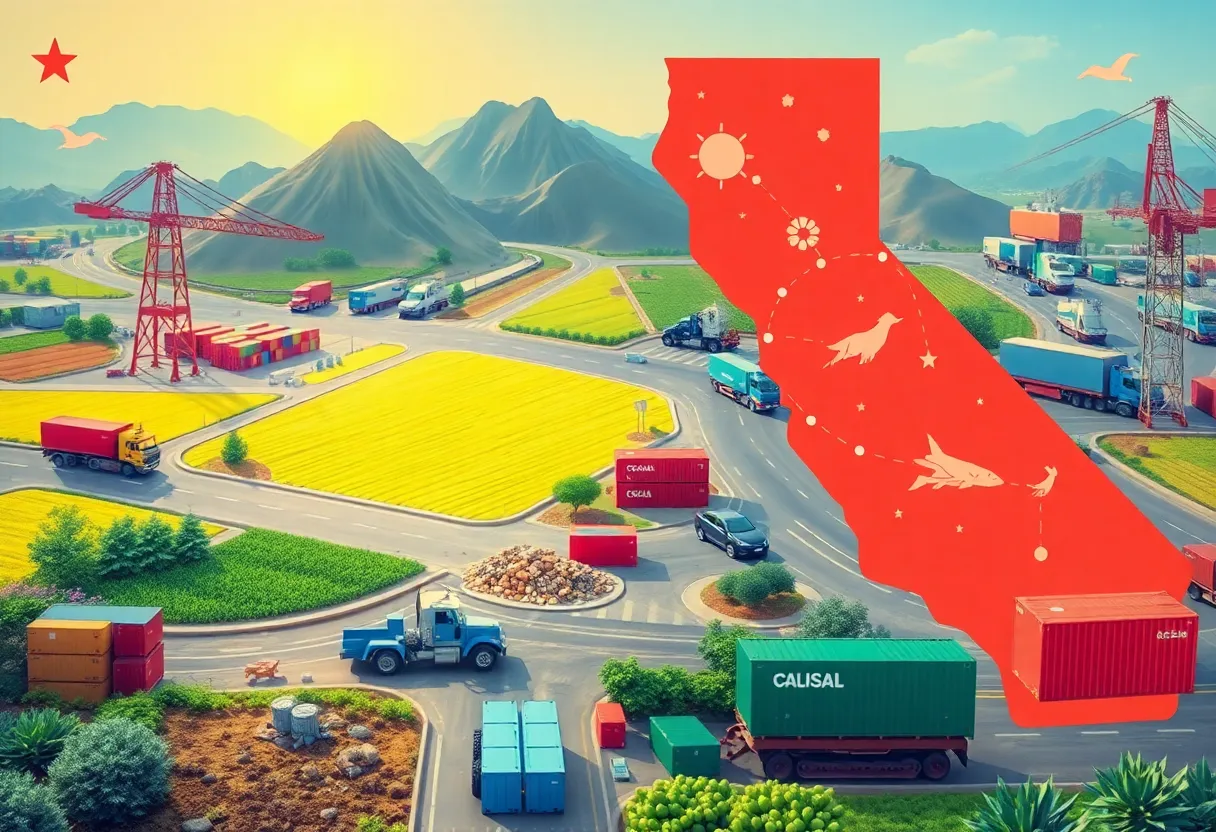News Summary
California is set to experience significant economic shifts due to mass deportations of undocumented workers. The impact on labor force and sectors like agriculture and construction may lead to job shortages, rising housing prices, and inflation. Experts project fluctuations in permitted housing units and unemployment rates, with the potential for substantial contributions to state GDP affected. Historical data suggests serious economic repercussions from similar policies could return, complicating the state’s future economic landscape.
California Faces Economic Challenges Amid Immigration Policy Changes
California, the Golden State, is bracing itself for some significant economic shifts as the Trump administration rolls out plans for mass deportations of undocumented workers. This move is projected to have a major impact on California’s labor force and overall economy, sending ripples across various sectors that rely heavily on immigrant labor.
The Domino Effect of Worker Departures
Millions of undocumented workers are expected to pack their bags and leave California, which could create a daunting landscape for the state’s economy. It’s estimated that a significant decline in the active workforce will accompany these deportations, causing the employment rate among the remaining population to drop. Experts at the UCLA Anderson Forecast predict that these changes will no doubt shake up the way we do business in California.
Technology vs. Tradition: A Mixed Bag for Job Seekers
While the tech sector may see a boost from an influx of H1B visa issuances bringing skilled workers to fill those high-demand jobs, it’s hard to overlook the looming job shortages in traditional sectors. The construction industry, in particular, is expected to feel the pinch. It is one of the hardest hit areas, given that a large part of its workforce consists of undocumented workers. With fewer hands available, the forecast indicates a direct reduction in the production of single-family homes and smaller multifamily developments—an alarming prospect in the midst of California’s ongoing housing crisis.
Rising Costs Looming on the Horizon
But wait, there’s more. Tariff policies coming down the pipeline on products from China, Mexico, and Canada are likely to inflate the costs of essential building materials. Expect to see lighting and electrical fixtures increasing by over 20%. Canadian lumber, a staple in construction, will also bear the brunt of these tariffs, adding more fuel to the fire. As if that’s not enough, U.S. inflation may continue to hover at elevated levels, leading to steeper construction loan costs. All these factors spell one thing: higher housing prices.
Predictions Through 2027
Looking ahead, the forecast for residential construction in California has been adjusted to estimate that total permitted new housing units will reach around 102,000 in 2025, inching up to about 127,000 by 2027. The state’s economy is expected to grow at a rate comparable to the rest of the U.S. from 2025 to 2026. That’s not the only number to keep an eye on, as estimated unemployment rates could hover around 5.7%, 5.2%, and 4.8% over the next few years.
The Role of Undocumented Workers
With about half of California’s farmworkers being undocumented, the potential loss could lead to significant repercussions, particularly in the agricultural sector. These individuals contribute nearly 5% to California’s GDP and have also paid around $8.5 billion in state and local taxes in the past year. So, the economic implications of mass deportations could extend far beyond just immediate job losses; rising food costs and diminished agricultural output could soon follow.
Looking Back to Learn Lessons
History provides a stark warning. Similar state-level deportation laws have led to huge economic losses before, with experts estimating that Alabama’s HB-56 caused deficits between $2.3 billion and $10.8 billion in GDP due to worker departures. It’s evident that industries dependent on immigrant labor, like agriculture and construction, could face severe labor shortages, which may not only lead to increased wages but also escalate costs for businesses, thereby stifling economic growth.
Conclusion: A Complicated Future
As California navigates through these changes, the impact of undocumented workers is becoming increasingly clear. Their role in filling essential positions that many Americans tend to avoid cannot be overstated. By stabilizing economic functions and bolstering consumer spending, these workers have been pivotal in keeping many industries afloat. As we look ahead to a complex future, staying informed about these economic dynamics is more important than ever.
Deeper Dive: News & Info About This Topic
- Los Angeles Times: Trump’s Mass Deportation Plan and California’s Economy
- Capital & Main: Why Mass Deportations Would Cripple California’s Economy
- The Conversation: Deporting Millions Would Shock the U.S. Economy
- New York Times: Immigration Workers and Deportation Fears
- The Guardian: Mass Deportations and California’s Food Chain

Author: STAFF HERE HOLLYWOOD
The Hollywood Staff Writer represents the experienced team at HEREHollywood.com, your go-to source for actionable local news and information in Hollywood, Los Angeles County, and beyond. Specializing in "news you can use," we cover essential topics like product reviews for personal and business needs, local business directories, politics, real estate trends, neighborhood insights, and state news affecting the area—with deep expertise drawn from years of dedicated reporting and strong community input, including local press releases and business updates. We deliver top reporting on high-value events such as the Hollywood Bowl summer concerts, the Hollywood Christmas Parade, film premieres at TCL Chinese Theatre, and festivals at the Magic Castle. Our coverage extends to key organizations like the Hollywood Chamber of Commerce and Visit Hollywood, plus leading businesses in entertainment, dining, and tourism that define the local economy. As part of the broader HERE network, including HERELosAngeles.com, HEREBeverlyHills.com, HEREAnaheim.com, and HEREHuntingtonBeach.com, we provide comprehensive, credible insights into Southern California's dynamic landscape.





